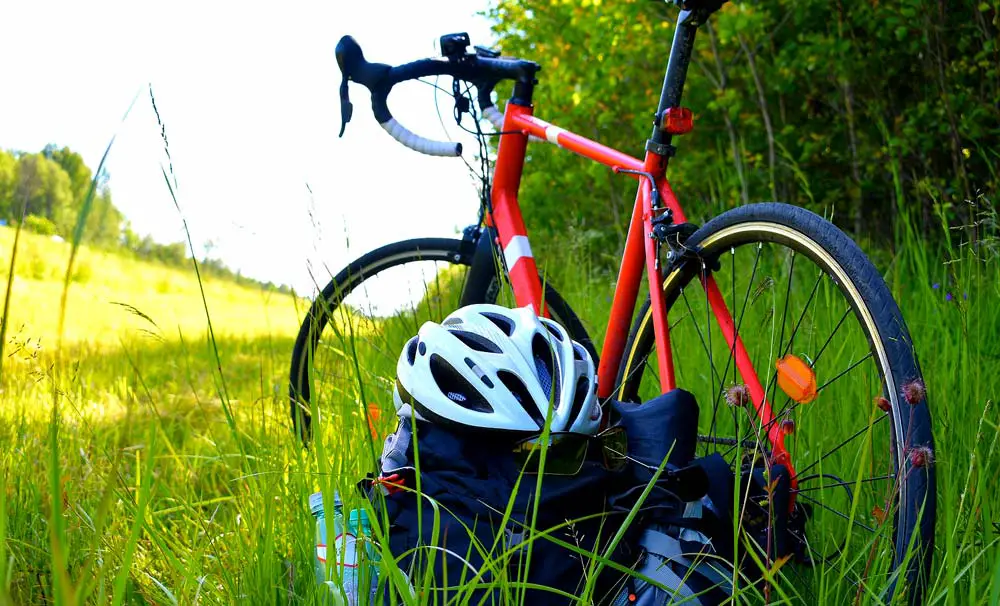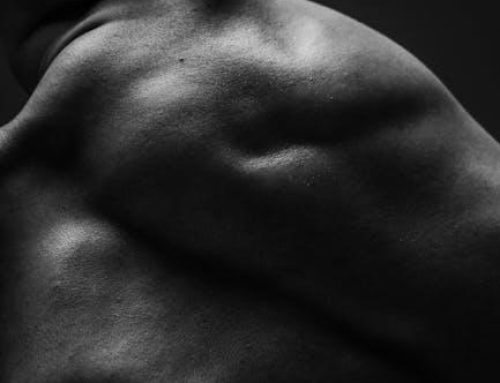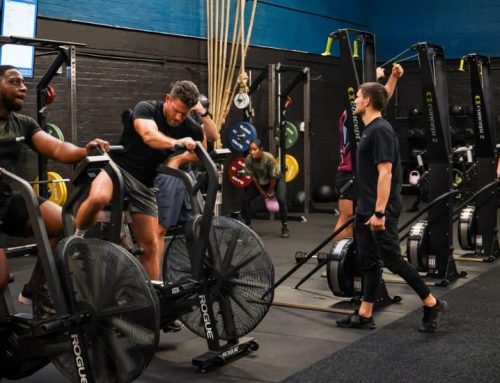Biking is always an excellent way to get out and enjoy some exercise in the great outdoors. However, finding a bike that’s the right size for you can be challenging, especially if you’re a big guy.
Buying a bike for heavy guys isn’t easy because you need to be sure that your bike can handle someone of your size. Plus, bigger guys often find that bikes designed for smaller folks just aren’t as comfortable.
Considering how important it is to get a bicycle that’s right for your needs, we’d love to help out! Here’s a list of the best bikes for heavy guys on the market today (as of December 2020). We’ve also included a detailed buyer’s guide to help you find the best model for all your cycling needs.
Contents
The Best Bike For Heavy Guys
Mongoose Dolomite 26″ Fat Tire
- Type: Fat Bike
- Frame: Steel
- Weight Capacity: 300lbs
An affordable option that’s designed to get heavier riders out on the trail, the Mongoose Dolomite 26″ is a fully-featured yet budget-friendly fat-tire bike.
It features 26″ wheels and is a good size for riders 5’4″ to 6’2″ tall. This bike’s 300lbs weight capacity and steel frame also make it an ideal choice for heavy guys that still want to get out and enjoy nature.
The Mongoose Dolomite is a particularly nice option for larger riders because it has a set of burly 4″ thick fat tires that offer plenty of stability and balance on the trail. Thanks to these tires, you can cycle on snow, sand, dirt, or mud with relative ease.
In addition, the Dolomite comes stock with a set of powerful dual disc brakes, which allow for precision braking. This is particularly important for larger riders as being able to stop quickly (despite lots of momentum) is critical.
That being said, this bike is definitely a bit on the heavier end of the spectrum (48lbs), so it’s not exactly designed to help you take gold in the Tour de France. As mentioned, its lower height range means it’s best for heavier guys under 6’2″.
Pros:
- Affordable price point
- Steel frame for durability
- Large 4″ thick fat tires provide stability
- Great for off-road adventures
- Strong brakes
Cons:
- Not great for very extremely tall people
- Fairly heavy
Diamondback Haanjo 3
- Type: Mountain Bike
- Frame: Aluminum
- Weight Capacity: 300lbs
A versatile bike with a high weight limit, the Diamondback Haanjo 3 is a solid all-around option for heavier riders that want a performance-centric cycling companion.
The Hannjo 3 comes stock with an aluminum frame that’s surprisingly durable. Its 300lb weight capacity is sufficient for many riders. Meanwhile, the bike’s lightweight gravel disc alloy fork provides for more precise steering on difficult trails.
This bike can accommodate wheels that are up to 700cc, and it comes with a set of Tektro Lyra mechanical disk breaks. It has a Shimano Sora 2×9 (18 speed) drivetrain with integrated FSA cranks for easier shifting between gears.
Despite its high weight capacity, the Diamondback Hannjo 3 weighs just 22lbs 8oz, which means it offers a great strength-to-weight ratio.
Although the Hannjo 3 is a bit on the pricier end of the spectrum, for heavier guys looking to take their cycling game to the next level, it’s a solid upgrade. This bike is also available in a wide range of different frame sizes to accommodate riders that are anywhere from 5’1″ to 6’4″ tall.
Pros:
- Can fit a wide range of heights
- 18-speed drivetrain
- Great strength to weight ratio
- Precision steering
- Big clearance for larger wheels
Cons:
- Pricey
Framed Minnesota Fat Bike
- Type: Fat Bike
- Frame: Aluminum
- Weight Capacity: 350lbs
A classic choice for off-trail riding, the Framed Minnesota Fat Bike is an award-winning model suitable for larger riders.
It boasts a brand new Shimano Deore M6000 wide range 10-speed drive train to give you the gear you need to make it up a steep hill. The bike’s frame is surprisingly strong for an aluminum model, which means it has an impressive weight capacity of 350lbs.
Like all fat bikes, the Minnesota comes with a set of rugged wheels that are wide enough to provide ample stability as you cycle. It also features Avid BB5 mechanical disc breaks and a Tri-Alight Caliper Positioning System to allow for precision breaking on the trail.
The Framed Minnesota Fat Bike also has a Velo Plush saddle, which is wider and more comfortable for bigger guys on bumpy trails.
Although the bike doesn’t have a suspension system, the Minnesota’s thick tires help smooth out bumps as you ride, while the Velo Plush saddle provides great all-around padding for a better day out on your bike.
Pros:
- Large weight capacity
- 10-speed drive train
- Velo Plush saddle for comfort
- Thick tires provide stability and shock absorption
Cons:
- Somewhat heavy
- Fairly expensive
Merax FT323 Mountain Bike
- Type: Mountain bike
- Frame: Aluminum
- Weight Capacity: 330lbs
A unique and innovative (yet budget-friendly) option for larger cyclists, the Merax Ft323 Mountain Bike is a nice model for road and trail biking.
It has a burly aluminum frame that can support up to 300lbs of weight both on and off the road. The frame has an integrated dual-suspension system to allow for a smoother, more comfortable ride.
Meanwhile, the Merax FT323 has a set of high-grade rubber handles that provide a better steering experience, even on tricky trails. From the handles, you can also quickly shift through the bikes’ 21-speed drive train so you can more easily tackle steeper terrain.
Wrapping up a great list of features on this bike is an affordable price point. Although it’s certainly a bit heavier (50lbs) than some might want for racing, if your main goal is to rip down the trail or go on a fun bike with your friends, the Merax FT323 is a great option.
Pros:
- 21-speed drive trail
- Economically priced
- Dual-suspension design for a smoother ride
- Great weight capacity
- High-grade rubber handle for better steering
Cons:
- Fairly heavy
Best Bike For Big Guys Buyer’s Guide
There are plenty of great bikes for heavy guides on the market, so the key is finding the right model for your needs. With a piece of gear as complex as a bike, it can be tricky to distinguish between all your different options.
To get you started, we’ll walk you through some of the most important things you need to know before buying your heavy guy-friendly bike. We’ll discuss exactly what makes a bike appropriate for larger people, so you know what to look for as you shop.
Best Type of Bike For Heavy Person
Bikes come in various shapes and sizes, each designed with a specific purpose in mind. That being said, some types of bikes are better suited for larger riders while others just aren’t as practical.
In general, mountain bikes, fat tire bikes, and electric bikes are all nice options for heavy people.
Why?
Well, both mountain bikes and fat tire bikes are designed to take a lot of abuse, and they often have durable frames that can handle upwards of 300 or even 400lbs. Moreover, the wide tires on a fat tire bike provide a lot of stability for larger riders on the trail.
On the other hand, an electric bike can be a good choice if you’re looking to get into cycling but want to ease into the sport. This style of bike is also great if you prefer somewhere that’s particularly hilly or if you’re looking for a more casual introduction to the sport.
How To Choose The Best Bike For Big Guys
The bike world is full of jargon and technology, which often makes shopping for a bike feel like an insurmountable task. However, the fact of the matter is that you don’t need to have a Ph.D. in cycling to be able to buy a bike.
In reality, you just need to know what to look for. So, here are 4 key things to look for when selecting a bike appropriate for a heavier rider.
Maximum Weight Capacity
Perhaps the most important consideration when buying a bike for a heavy guy is getting one that can support your weight. Bike weight capacities can vary quite drastically, from around 220lbs all the way to 500+lbs.
However, bikes with a 500+lbs capacity aren’t common, and many of them are custom outfitted or customized after purchase. You’re much more likely to find a bike with a weight capacity between 275lbs and 350lbs that requires no extra customization.
If this isn’t sufficient for your needs, have no fear! Most quality bike shops are willing to help you upgrade your bike’s individual parts to achieve a higher weight capacity upon request.
Frame Material
For the most part, the overall strength of a bike comes down to the material that it’s made out of. More specifically, the frame material of a bike has an outsized impact on its overall weight capacity.
If you’re looking for a bike that’s appropriate for a big guy, you’ll want to consider a steel or aluminum-framed model. While these 2 options are often substantially heavier than their carbon fiber counterparts, they have much higher maximum weight capacities.
Wheel Strength
In addition to your bike’s frame material, you’ll want to consider the strength of the wheels. Strong wheels are a must if you want to take your bike off the road, so having quality rims is essential.
It’s often a good idea to talk to your local bike shop to see if they can help you create a set of custom wheels that have extra-strong spokes. Doing so can help you get a strong, reliable wheel that you just can’t find from a manufacturer.
Seat Design
Finally, we have the seat of the bike. Since you’ll spend a whole lot of your biking time sitting down in the saddle, it’s imperative that you feel comfortable as you ride.
Sure, there aren’t any bike saddles out there that will make you feel like you’re lounging in a recliner, but having a comfortable seat is important, especially for larger riders.
If possible, look for a bike that has a large, well-padded seat. Otherwise, consider upgrading your bike seat to find one that’s more comfortable for your body.
Frequently Asked Questions
Here are our answers to some of your most frequently asked questions about bikes for heavy guys:
How heavy is too heavy to ride a bike?
In reality, there’s no such thing as being “too heavy” or “too fat” to ride a bike. As long as you have a bike that can accommodate your weight, you can and should get out and cycle if it’s something you’re interested in.
Some heavier folks find it easier to start with an electric bike, especially if they live in a very hilly area.
Alternatively, if you can’t find a bike that’s suitable for your weight, you can always talk to a bike mechanic about swapping out the parts on a standard steel frame model to increase its overall weight capacity.
Are fat tire bikes better for heavy riders?
Many heavier riders find that fat tire bikes are better for their needs. The reason for this is 2-fold.
First and foremost, most fat tire bikes have higher maximum weight capacities, which makes them great for big guys.
Moreover, fat tire bikes have wide tires, which provide ample stability as you bike. This can be nice for heavier riders, first-time cyclists, or anyone new to the sport.
Can you ride a bike if you are overweight?
Yes, you can ride a bike if you’re overweight, so long as you have a bike that’s designed to accommodate someone of your size. In fact, biking, which is a low-impact activity (unlike running), can be a great way for people to lose weight without putting undue stress on the body. It’s also just a fun activity that allows you to enjoy some fresh air while staying active at the same time.
Keep in mind; it typically takes a while to get your body used to cycling, regardless of weight. If you’re interested in cycling but are concerned about your weight, consider talking to your doctor or hiring a certified personal trainer to get you started.








Leave A Comment